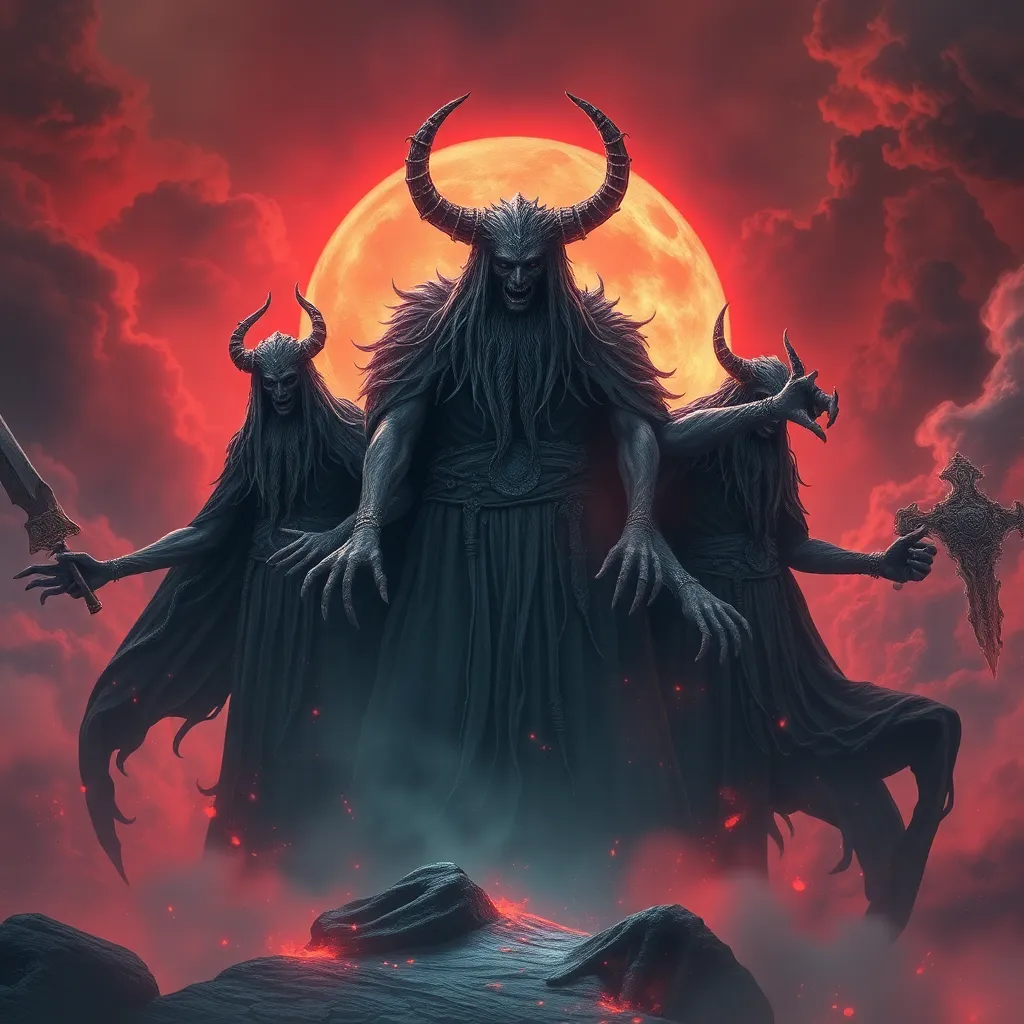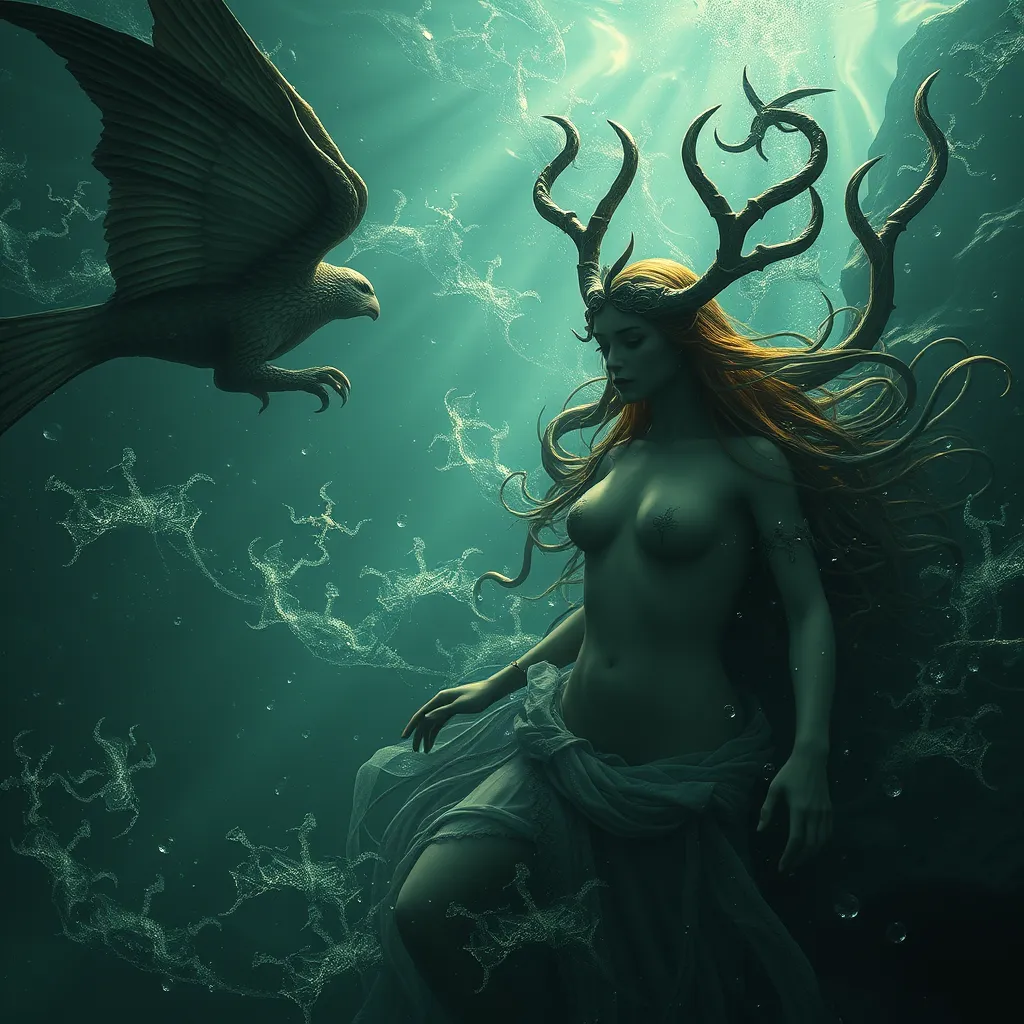The Harpy in Popular Culture: A Case Study of Modern Interpretations
I. Introduction
The Harpy, a creature from ancient mythology, has captivated audiences for centuries with its intriguing blend of beauty and menace. Traditionally depicted as a bird-like woman, the Harpy embodies a complex character that has evolved throughout history. In this article, we will explore the modern interpretations of the Harpy in popular culture, examining how this mythological figure has been reimagined across various media.
II. The Mythological Origins of the Harpy
A. Description of the Harpy in ancient Greek mythology
In ancient Greek mythology, Harpies were depicted as winged spirits known for stealing away individuals and carrying them off to the underworld. Often described as having the body of a bird and the face of a woman, they were associated with storms and were thought to be agents of punishment. The most famous Harpies, Aello, Ocypete, and Celaeno, were known to torment the Argonauts, showcasing their role as both adversaries and enforcers of divine will.
B. Symbolism and cultural significance in ancient times
The Harpy symbolized the chaotic and uncontrollable aspects of nature. Their role as both messengers and punishers reflected the ancient Greeks’ understanding of fate and divine retribution. Furthermore, Harpies were often seen as representations of the darker sides of femininity, intertwining themes of seduction and danger.
III. The Harpy in Literature
A. Examination of the Harpy’s role in classic literature
In classic literature, the Harpy often appears as a malevolent force. For example, in Homer’s “Odyssey,” they are tasked with tormenting the seer Phineas, blinding him to the truth of the future. This portrayal reinforces the Harpy’s role as an antagonist, embodying the fears and dangers faced by heroes in their quests.
B. Modern literary adaptations and reimaginings
In contemporary literature, the Harpy has been reimagined in various ways. Authors such as Neil Gaiman and Amanda Hocking have incorporated Harpy characters into their works, often giving them more complex motivations and backgrounds. For instance:
- Neil Gaiman’s “American Gods” – Features a Harpy character that challenges traditional notions of beauty and morality.
- Amanda Hocking’s “Trylle” Trilogy – Presents Harpies as misunderstood creatures with depth and emotional struggles.
These reinterpretations highlight a shift towards a more nuanced understanding of mythological figures, allowing for exploration of themes such as identity and power.
IV. The Harpy in Film and Television
A. Key films and TV shows featuring Harpy characters
In the realm of film and television, Harpies have made appearances in various forms. Notable examples include:
- “Clash of the Titans” (1981 and 2010) – Features Harpies as antagonistic creatures that hinder the hero’s journey.
- “Harry Potter and the Order of the Phoenix” – Includes a Harpy-like character in the form of a magical creature, though not directly named.
B. Analysis of how these portrayals differ from traditional depictions
Modern portrayals often emphasize the Harpy’s strength and independence, contrasting sharply with the traditional depiction of these creatures as mere harbingers of doom. This shift reflects broader cultural changes, showcasing female characters who possess agency and complexity.
V. The Harpy in Video Games
A. Overview of Harpy representations in popular video games
Video games have also embraced the Harpy, presenting them in various roles. Titles such as:
- “Final Fantasy” series – Features Harpy-like creatures as both allies and enemies.
- “Smite” – Players can encounter Harpy characters as part of the game’s mythological pantheon.
B. Discussion on gameplay mechanics and character development involving Harpies
In these games, Harpies are often designed with unique abilities that reflect their mythological origins. For example, they might possess flight capabilities or elemental powers, adding depth to gameplay. This interactive portrayal invites players to engage with the Harpy in ways that traditional narratives do not.
VI. Artistic Interpretations of the Harpy
A. Exploration of visual art and illustrations depicting Harpies
The Harpy has also found a place in visual arts, inspiring artists to explore its dual nature. From classical paintings to modern illustrations, Harpies are depicted in various styles:
- Romanticism – Often portrayed as tragic figures caught between beauty and horror.
- Contemporary art – Shows Harpies reimagined as symbols of empowerment.
B. Impact of contemporary art on the perception of the Harpy
Contemporary artists often challenge the negative connotations associated with Harpies, presenting them as symbols of strength and resilience. This shift reflects a broader cultural movement towards re-evaluating mythological figures through a modern lens.
VII. The Harpy as a Symbol in Modern Feminism
A. Analysis of the Harpy as a feminist icon
In recent years, the Harpy has emerged as a symbol of female empowerment and liberation. Feminist interpretations highlight the Harpy’s independence, challenging patriarchal narratives that often depict women as mere victims or seductresses. The Harpy becomes a metaphor for reclaiming one’s identity and asserting agency.
B. Discussion of the reinterpretation of the Harpy in contemporary feminist discourse
Contemporary feminist discourse has led to a reexamination of the Harpy, encouraging discussions around female anger, power, and the complexities of womanhood. This reinterpretation allows for a more inclusive understanding of femininity, celebrating the multifaceted nature of women.
VIII. Conclusion
In conclusion, the Harpy’s journey from a mythological antagonist to a complex figure in modern culture illustrates the evolving nature of narratives surrounding female figures. Through literature, film, video games, and art, the Harpy has been reinterpreted in ways that challenge traditional stereotypes and embrace themes of empowerment. As society continues to grapple with issues of gender and identity, the Harpy stands as a potent symbol of transformation and resilience, paving the way for future interpretations that reflect the ongoing dialogue about femininity and power.



